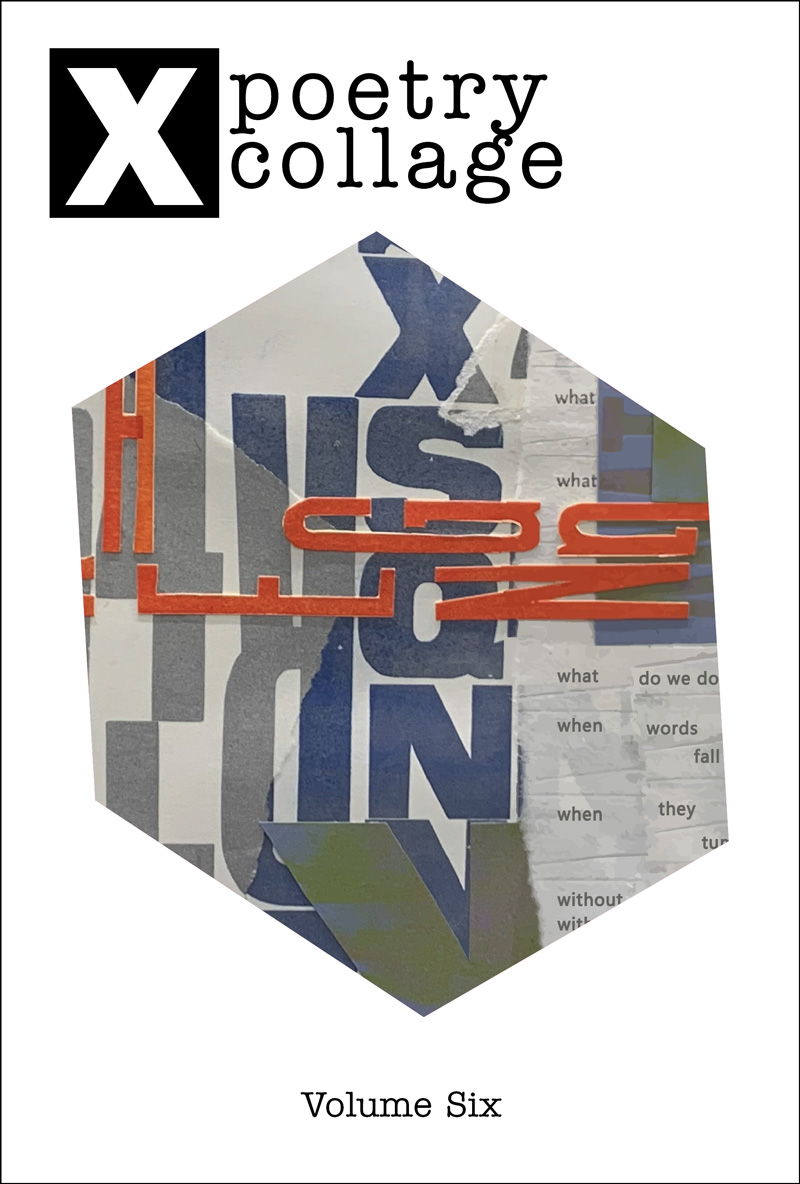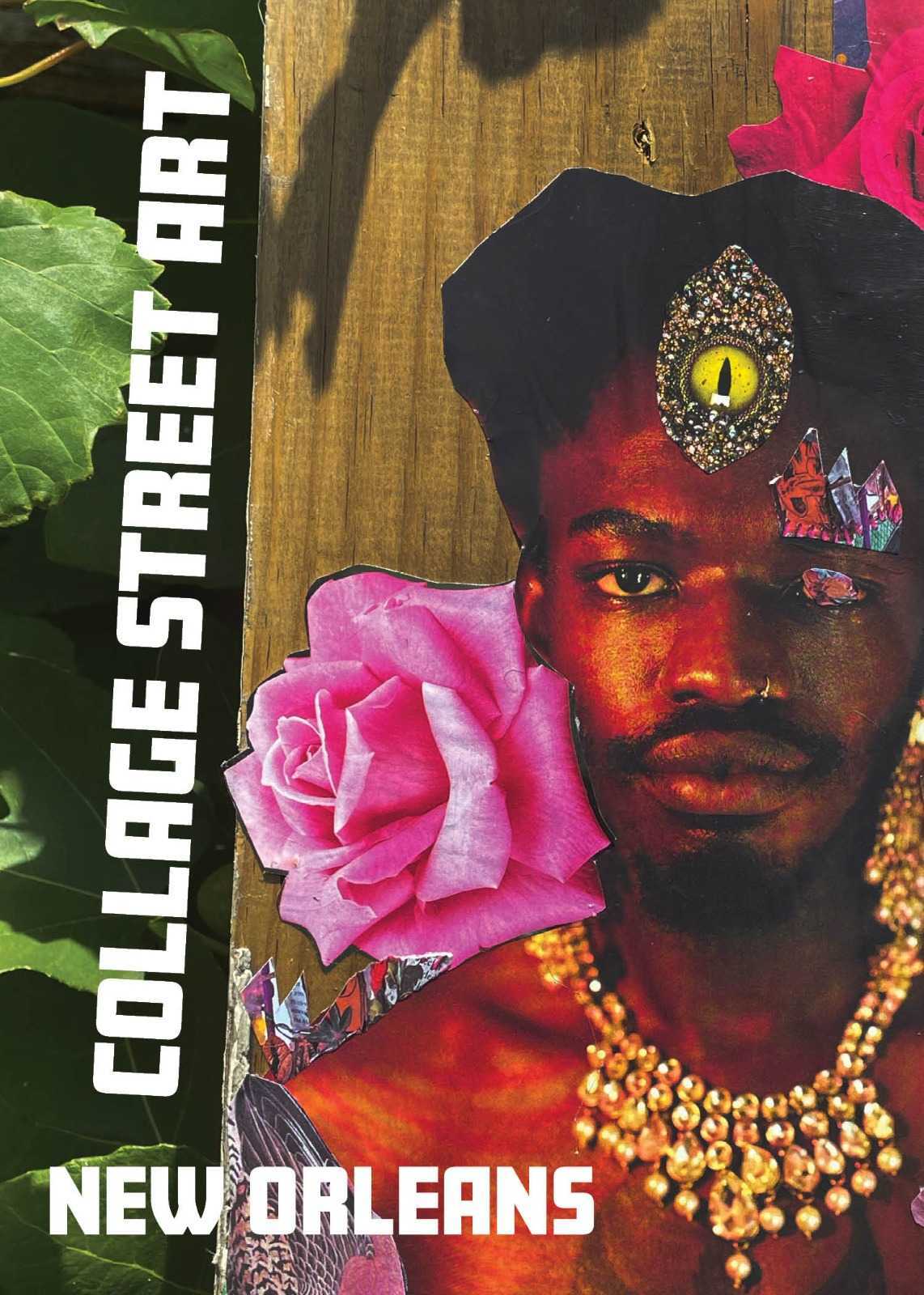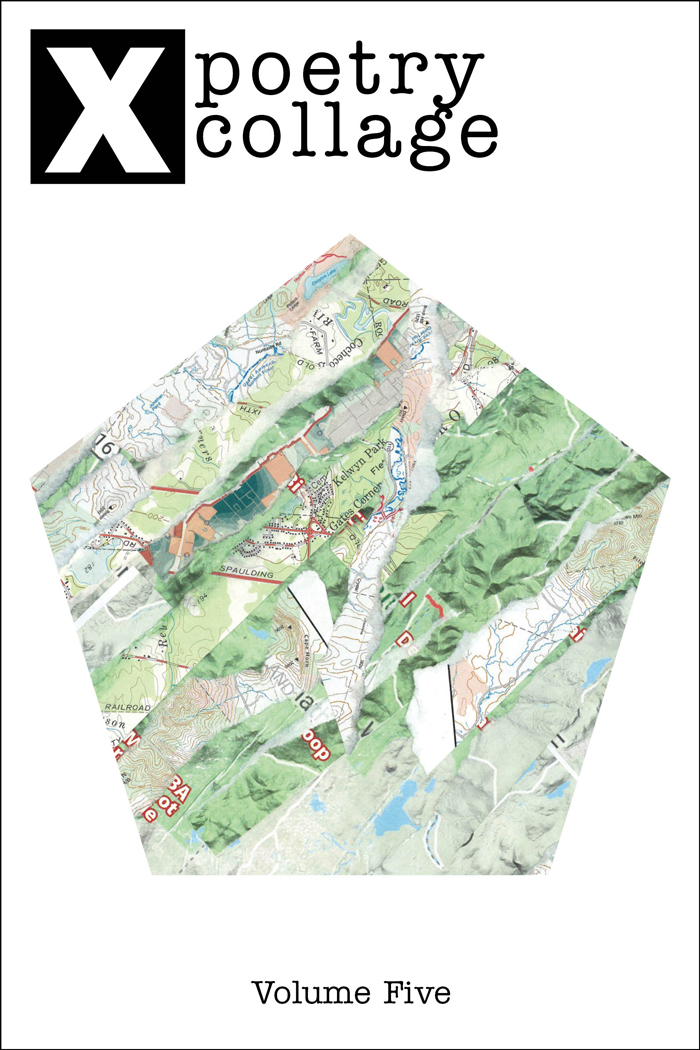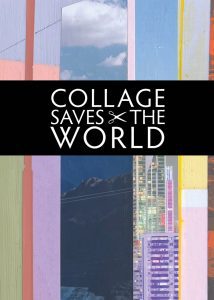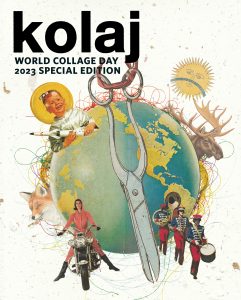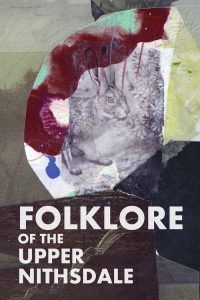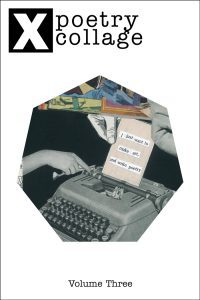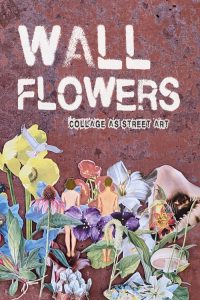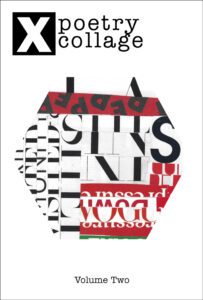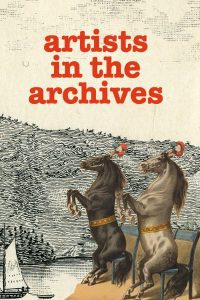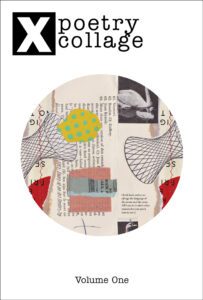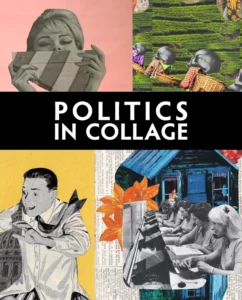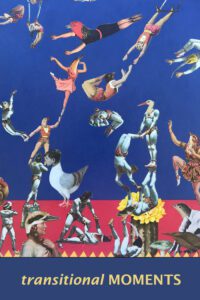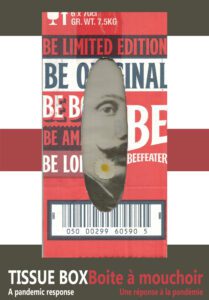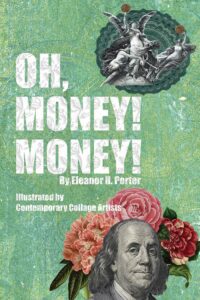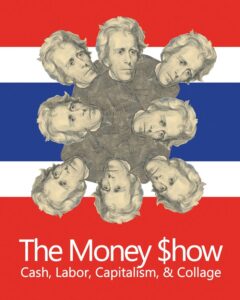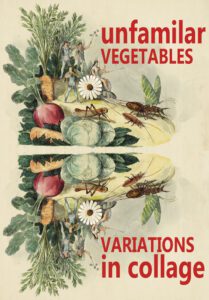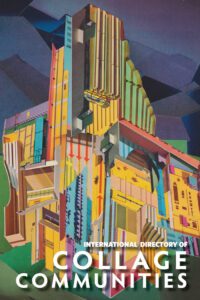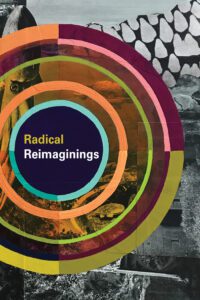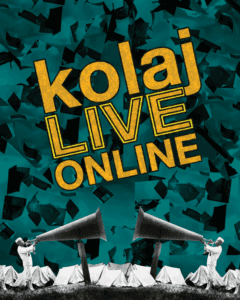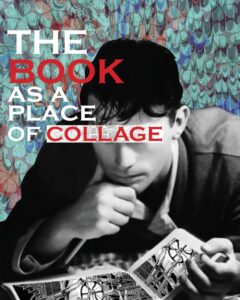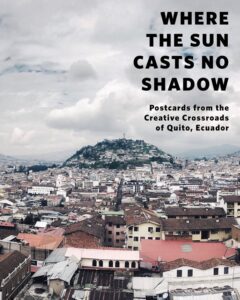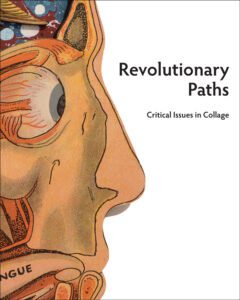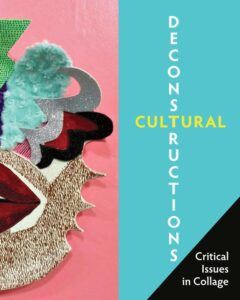Publications
At Kolaj Institute, we see The Book as a place to experience collage and therefore maintain an active publishing program. Kolaj Institute works with Kasini House to publish books that document and diffuse ideas that deepen our understanding of collage as a medium, a genre, a community, and a 21st century movement. Books are often the outcome of residencies, fellowships, and other projects.
NEW PUBLICATIONS
PoetryXCollage, Volume 6
PoetryXCollage is a printed journal of artwork and writing which operates at the intersection of poetry and collage. We are interested in found poetry, blackout poetry, collage poems, haikus, centos, response collages, response poems, word scrambles, concrete poetry, scatter collage poems, and other poems and artwork that inhabit this world.
Each issue presents six movements of work by artists and curators. Page spreads are meant to be free zones of thinking where the contributor has chosen all elements of the layout: font, image place, composition, etc.
PoetryXCollage Volume Six features work by Susan Lee Simpson (Chapel Hill, North Carolina, USA), Christopher Kurts (New Orleans, Louisiana, USA), Éric Simon and Julia Schroeder (Hudson, Quebec, Canada), Zeke Shomler (Fairbanks, Alaska, USA), Love Poems from Jenn Arras, Thomas Mayer & Yoomee Ko, and Collaborations by Kerrie More, Julie Byers, Jessa Dupuis, Thomas Mayer & Rosemary Rae.
FORTHCOMING PUBLICATIONS
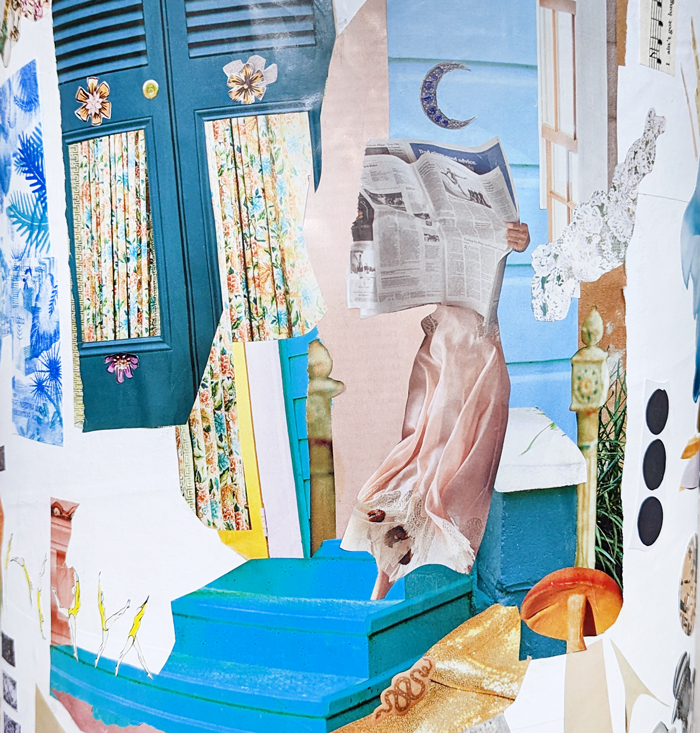
FORTHCOMING BOOK
New Orleans In Collage
How do artists see place and reflect that lens in their work? The book explores the complex histories that make New Orleans an exceptionally fertile place for artists and its unresolved conflicts and impending threats makes such work one of urgency. Building on labs that took place in 2022, Kolaj Institute will host New Orleans Collage Artist Lab: City Archive in 2023, a five-day intensive of workshops, discussions, and collage making designed to foster the integration of history and place into a collage artist’s practice. Image by Patricia Doucet.
RECENT PUBLICATIONS
Collage Street Art: New Orleans
What happens when you take collage to where the people are? Kolaj Street Krewe is an international group of artists exploring the role of collage in street art as a practice and phenomenon since 2018. In June 2023, a dozen artists gathered in New Orleans for a week-long, in-person artist residency. This zine is a document of what they made.
Featured artists include: Meghan Larimer (Brooklyn, New York, USA), Aisha Shillingford (Brooklyn, New York, USA), Erica Bryant (Rochester, New York, USA), Kristina Corre (Ottawa, Ontario, Canada), Yazmin “Yazz” Atmore (Denver, Colorado, USA), LaVonna Varnado-Brown (Kenner, Louisiana, USA), William Wallace III (Columbia, Missouri, USA), Melissa Sutherland Moss (Brooklyn, New York, USA), Re Howse (New Orleans, Louisiana, USA), Madeline Sorel (Brooklyn, New York, USA), FANCLUB13 (Clearwater, Florida, USA), and Rosie Schinners (Salt Spring Island, British Columbia, Canada).
PoetryXCollage Volume Five
PoetryXCollage is a printed journal of artwork and writing which operates at the intersection of poetry and collage. We are interested in found poetry, blackout poetry, collage poems, haikus, centos, response collages, response poems, word scrambles, concrete poetry, scatter collage poems, and other poems and artwork that inhabit this world. Each issue presents six movements of work by artists and curators. Page spreads are meant to be free zones of thinking where the contributor has chosen all elements of the layout: font, image place, composition, etc.
PoetryXCollage Volume Five features work by Johnette Downing (New Orleans, LA, USA), Stacy DeBritz (Schenectady, NY, USA), maryhope|whitehead|lee (Phoenix, AZ, USA), Aimee-Beth Martens (Saskatoon, Saskatchewan, Canada), Kelly McGovern (Philadelphia, PA, USA), and Gavin W Sewell (New York, NY, USA).
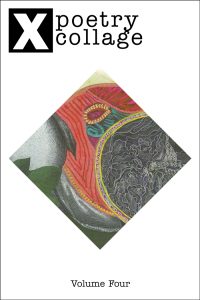
PoetryXCollage Volume Four
PoetryXCollage is a printed journal of artwork and writing which operates at the intersection of poetry and collage. We are interested in found poetry, blackout poetry, collage poems, haikus, centos, response collages, response poems, word scrambles, concrete poetry, scatter collage poems, and other poems and artwork that inhabit this world. Each issue presents six movements of work by artists and curators. Page spreads are meant to be free zones of thinking where the contributor has chosen all elements of the layout: font, image place, composition, etc. MORE
Collage Saves The World
Collage Saves the World is the second book from Kolaj Institute’s Politics in Collage Project, a series of residencies, publications, discussions, and exhibitions examining complex socio-political issues that contemporary society is contending with, in order to spark meaningful dialogue and inspire deeper engagement. Each artist chose specific issues to explore through the medium of collage. Their artwork allows viewers an opportunity to reflect on various forms of racism, colorism, ableism, and sexism; the war in Ukraine; climate change and the importance of permaculture; beauty standards and women’s autonomy. MORE
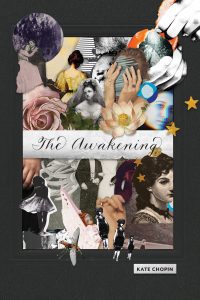
The Awakening
by Kate Chopin, illustrated & interpreted by contemporary collage artists
Set in New Orleans, Kate Chopin’s 1899 novel, The Awakening, touches on 19th century feminism, identity, and societal themes. Under the art direction and creative leadership of Nancy Bernardo and Christopher Kurts, a dozen international collage artists collaborated to illustrate the book. Working as a group, the artists analyzed the story, discussed themes, uncovered symbols, and asked questions to visually interpret this seminal feminist text for a 21st century audience. MORE
World Collage Day 2023 Special Edition
In honour of World Collage Day, 13 May 2023, Kolaj Institute is releasing a special edition of Kolaj Magazine. The Special Edition is full of Cut-Out Pages and stories from inspiring collage artists. The printed magazine also includes an interview with World Collage Day 2023 Poster Artist Anthony D Kelly. MORE
Folklore of the Upper Nithsdale
Thirty-three collage artists illustrate stories of witches, ghosts, and other spirits from Sanquhar, Scotland. Using stories collected from William Wilson’s 1904 book, artists reimagine these tales in a 21st Century context and invite us to see folklore as the imagination of the past, understood in the present. MORE
PoetryXCollage Volume Three
PoetryXCollage is a printed journal of artwork and writing which operates at the intersection of poetry and collage. We are interested in found poetry, blackout poetry, collage poems, haikus, centos, response collages, response poems, word scrambles, concrete poetry, scatter collage poems, and other poems and artwork that inhabit this world. Each issue presents six movements of work by artists and curators. Page spreads are meant to be free zones of thinking where the contributor has chosen all elements of the layout: font, image place, composition, etc. MORE
Wallflowers: Collage as Street Art
Wallflowers: Collage as Street Art explores the intersection of collage and street art. Christopher Kurts recalls the formation of the Kolaj Street Krewe from its creation at Kolaj Fest New Orleans to a guerilla art project during the COVID-19 pandemic to an artist residency for Street Artists. The book contains examples of collage as street art by twenty-four artists from eight countries. MORE
PoetryXCollage Volume Two
PoetryXCollage is a printed journal of artwork and writing which operates at the intersection of poetry and collage. We are interested in found poetry, blackout poetry, collage poems, haikus, centos, response collages, response poems, word scrambles, concrete poetry, scatter collage poems, and other poems and artwork that inhabit this world. Each issue presents six movements of work by artists and curators. Page spreads are meant to be free zones of thinking where the contributor has chosen all elements of the layout: font, image place, composition, etc. MORE
Artists in the Archives
Local history museums, archives, and collections are vital to building healthy communities and to anchoring our understanding of the world around us in the place where we live, work, and play. Collage artists have unique skills that are particularly useful in our historical moment. They understand that something beautiful, something meaningful can come from chaos; that destruction is easier than creation, which takes patience, precision, thoughtfulness, and intuition. What happens when we bring those two groups together? MORE
PoetryXCollage Volume One
PoetryXCollage is a printed journal of artwork and writing which operates at the intersection of poetry and collage. We are interested in found poetry, blackout poetry, collage poems, haikus, centos, response collages, response poems, word scrambles, concrete poetry, scatter collage poems, and other poems and artwork that inhabit this world. Each issue presents six movements of work by artists and curators. Page spreads are meant to be free zones of thinking where the contributor has chosen all elements of the layout: font, image place, composition, etc. MORE
Politics in Collage
In a time where the challenges facing us as individuals and communities have grown to seemingly insurmountable levels, further exacerbated by the increasing toxicity of the political climate, artists are using their work to confront these challenges by engaging their viewers in a higher level of discourse. Through a virtual residency, twenty-five artists created collage works examining complex socio-political issues that contemporary society is contending with, in order to spark meaningful dialogue and inspire deeper engagement. MORE
Empty Columns Are a Place to Dream
A companion book to the project of the same name, Ric Kasini Kadour unpacks what monuments are and their role in our communities. He takes the reader on a tour from the Megalithic Temples of Malta to Brú na Bóinne in Ireland to the Confederate monuments of Obion County, Tennessee to the empty column in the center of Birr, County Offaly, Ireland. Kadour asks us to consider monuments as sites of collective memory and as places to reflect upon history, even when that history is false or misleading. He then shows us what happens when collage artists reimagine these spaces as sites of truth and reconciliation. MORE
transitional MOMENTS: restoring equilibrium through the art of collage
The 112-page book includes one hundred collages selected from over 2000 submissions created from 600 collage packets sent to artists around the world for World Collage Day 2021 by the Arizona Collage Collective. Suzanne Winkel writes that the book “reflects our current state of uncertainty as we wrestle with feeling constrained, disoriented and suspended in air between what was and what will be. Yet these thresholds, unsettling as they are, can be spaces of great creativity and transformation.” MORE
Tissue Box: A pandemic response | Boite à mouchoir: Une réponse à la pandémie
In the Fall of 2021, Kolaj Institute worked with Virginie Maltais of Québec Collage in Montreal to present their pandemic project as a bilingual book. In Spring 2020, as the world was going into lockdown due to the COVID-19 pandemic, Maltais felt a deep need for a point of reference. Her solution was a project that asked collage artists from around the world to make a collage using the top of a tissue box. MORE
Oh, Money! Money!by Eleanor H. Porter
Kolaj Institute is pleased to announce the publication of Oh, Money! Money! by Eleanor H. Porter and illustrated by a collective of collage artists. In Porter’s 1918 novel, a Chicago multi-millionaire struggles to decide to whom he should leave his money. The book is a time capsule of early 20th century American life with a strong focus on the lives of women and observations about material culture and communities before the rampant consumerism of the 1920s and the Great Depression. To illustrate the book, Kolaj Institute organized a residency that brought together ten artists who worked collaboratively to make sixty-three collages that interpret Porter’s novel for a 21st century audience. MORE
The Money $how: Cash, Labor, Capitalism & Collage
By Ric Kasini Kadour. The Money $how juxtaposes contemporary artwork against fragments of history and literature as a way of showing how collage can help us deconstruct culture and understand the world differently. The book takes readers on a tour of late-stage capitalism. The book starts from the premise that money is an idea that shapes contemporary life and present works that invite viewers to consider cash, labor, and capital. Each contemporary artist in the book uses collage to unpack ideas about money and its influence on our culture. Artworks speak about Black wealth, immigrant remittances, and how mid-20th century advertising informs present-day attitudes. Artists collage dollar bills into flowers and mine material remnants to tell stories about home economics. MORE
Unfamiliar Vegetables: Variations in Collage
Unfamiliar Vegetables is a collection of collage where each of the fifty artists interpreted, in their own way, Carlotta Bonnecaze’s 1892 Carnival float design Familiar Vegetables. Project organizer Christopher Kurts observed, “Unfamiliar Vegetables is an experiment in controlled chaos….tiny variations within each artist’s creative sphere accumulate until the outcomes are as unique as the people creating them.” MORE
International Directory of Collage Communities
Collage is unique in the larger art world in that communities and collectives play an important role in the production and promotion of the art form. Collage groups organize exhibitions, run online calls to artists, facilitate exchange across borders. While the presence of these groups is felt, who they are, how they function, and how they are evolving over time is poorly understood. The International Directory of Collage Communities is a 104-page survey of collage networks, guilds, communities, projects as well as online efforts and groups focused on collage research. MORE
Radical Reimaginings
The curators of the 96-page book invited artists who use collage in their practice to put forward a work of art that offers a visual narrative that speaks to the unprecedented change unfolding in 2020. An essay by Ric Kasini Kadour reflects upon collage’s unique ability to imagine new realities. Forty artists from nine countries and multiple Indigenous peoples—Salish-Kootenai/Métis-Cree/Sho-Ban, Tlingit/Nisga’a, Oglala/Lakota, and Seneca Nation—offer a variety of perspectives. The voices of Black, Latinx, Native, and white Americans mingle with those from Chile, Colombia, Mexico, Peru, Argentina, Canada, France, and Germany. Artwork is accompanied by a statement in which artists describe how they want to reimagine the world. MORE
Kolaj LIVE Online Program Book
The Kolaj LIVE Online Program Book is your guide to the event. The 62-page book includes in-depth descriptions of the fourteen Kolaj LIVE Online events along with biographies of the presenters and institutional partners. The book serves as the catalog for the Kolaj Institute Fundraising Exhibition. It also comes with four starter collages to participate in the Collage Castell activity, a cat-themed Cut Out Page for the Cat & Paste Workshop, and a commentary about the creation of the event. MORE
The Book as a Place of Collage
The companion to COLLAGE::BOOKS, a symposium about the role of publishing in collage, considers as a point of departure that the book, not the gallery, is the best place to experience collage. In this book, Ric Kasini Kadour investigates this idea using examples from the magazine’s collection of collage books and work by presenters are the symposium, Kadour traces the history of collage publishing, offers a taxonomy of various publishing activities, and discusses the function of the book in art practice, for art professionals, for viewer or collector. MORE
Where the Sun Casts No Shadow
“Where The Sun Casts No Shadow: Postcards from the Creative Crossroads of Quito, Ecuador” is a testament to the power of artist communities. A companion to the traveling exhibition, the book brings together the in-camera collage works of Stephen & Eve Schaub, the murals of Mo Vàsquez, documentary photographs of PLAYhouse in Quito, the poetry of Maria Clara Sharupi Jua in Spanish, English, and Shuar; and art from Quito’s El Club de Collage. MORE
Revolutionary Paths
When the collage is presented in exhibition, it is often done so without the critical framework granted other mediums. “Revolutionary Paths: Critical Issues in Collage” presents examples of collage that represent various aspects and takes on the medium. Each work in the exhibition represents the potential for deeper inquiry and further curatorial exploration of the medium. MORE
Cultural Decontructions
Collage is unique as a medium in that it uses as its material artifacts from the world itself. To harvest those fragments, the artist must first deconstruct culture; they must select, cut, and remove the elements they do not wish to use and then reconstruct work that tells a new story. “Cultural Deconstructions: Critical Issues in Collage” presents examples of collage artists who are deconstructing identity as a way to critique culture. MORE

